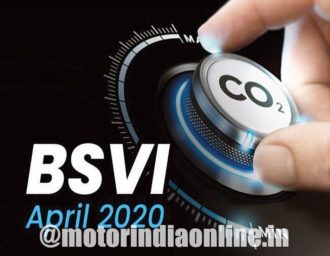
As India leads the global fight against the virus pandemic, April 1, 2020 has been recorded as a defining moment in the Indian automotive industry’s journey with its transition to BS-VI emission norms from BS-IV by skipping BS-V altogether. This transition has been four years ahead of the first plan of the Government of India in 2014, wherein it was proposed to move to BS-VI in the year 2024. “While the resolve of our nation is currently under test, unflinching commitment and combined efforts of the Indian automotive industry has made BS-VI migration a reality against all odds,” stated the Society of Indian Automobile Manufacturers (SIAM).
Emission Norms of these new vehicles are now at par with Europe, meeting one of the most stringent emission norms globally. In fact, the emission norms of all models of two-wheelers in India are ahead of Europe (2021) and Japan (2022), and India is the first country across the world to adopt this level of emission norms. More than 1,000 models and variants of BS-IV were to be developed to BS-VI emission norms in just three years, and the industry in the process is investing to the tune of Rs 70,000 crores for this achievement, according to SIAM.

Commenting on this historic leap, Rajan Wadhera, President, SIAM, said, “It is unprecedented anywhere in the world to switch to such stringent emission regime on one single day for all categories of vehicles, including two-wheelers, three-wheelers, passenger vehicles, trucks and buses. I do compliment my fellow industry colleagues for this outstanding achievement in meeting BS-VI emission norms despite facing huge challenges of technology, time and resources.” In a recent judgment, the Supreme Court has banned the sale and registration of motor vehicles conforming to the emission standard Bharat Stage IV in the entire country from April 1, 2020.